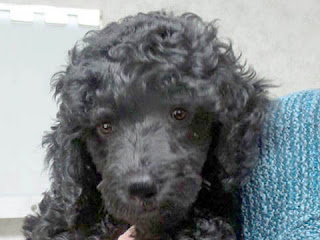Pyrotechnics are procured with gusto in the USA, and Independence
Day is a misnomer: This celebration lasts about two weeks. And those can be the
most anxiety-laden 14 days of the year for many of our canine friends. The
flashing lights and booming reverberations of fireworks (and I’ll put
thunderstorms in the same category) can be terrifying for them. When the bottle rockets start hissing and
blasting, and your four-legged friend starts pacing, panting, shaking, and
trying to “escape,” intervention is in order.
Fortunately, there are several ways you can reduce your dog’s
nervousness. Over the years I’ve had many of you pass along hints that you
found to be helpful for both fireworks and thunderstorms:
- You can condition your dog to tolerate storms and fireworks by desensitizing him to the sounds and flashing lights. This takes time and work on your part and must be started well before the storm and fireworks season begins.
- Make sure your dog has a microchip implanted and is wearing a collar with ID tags if there’s any possibility he could escape from your yard. Many dogs run away during fireworks or storms, never to be recovered. Keep him inside in those situations.
- On the day of the event, make sure the dog is well exercised. That’s not always possible in the case of thunderstorms, but keep a sharp eye on the weather report. If he’s exhausted from chasing his ball, he’ll have less energy to expend pacing and shivering.
- Put him in the quietest part of the house, such as a basement, closet, or interior room with no windows. If there are windows, close the curtains or blinds, and keep the lights on to minimize the effect of flashing light coming from outdoors.
- Provide a safe place within the room for him to hide in, such as a crate or a fort made of blankets. Some dogs actually like crawling into the bathtub! Cover the crate with a blanket, but make sure the dog won’t get too hot. This hideaway should be accessible to him when you’re not home.
- If possible, allow him to have human companionship. Years ago, we were told that trying to comfort an anxious dog would just reinforce the anxiety. But now we know that the loving touch of a dog’s favorite person will go a long way toward alleviating his apprehension.
- Provide some white noise to mask the booming: Turn on a fan, a radio, a TV, or some calming music.
- To help keep the dog preoccupied, give him a Kong or other treat-dispensing toy filled with something he loves.
- Buy him a Thundershirt or an Anxiety Wrap. The constant gentle pressure of those wraps is equivalent to swaddling an infant and helps alleviate angst in some dogs.
- Drugs! Don’t be afraid to try them. Many pet owners are reluctant to “drug their pets up,” but I consider it a kindness if they’re distressed. Anxiety has a way of escalating into a phobia, at which point even drugs might not help. As long as we’ve done an exam on your dog within the past year, there’s no need to bring him in. Just give us a call and we’ll determine the most effective medication. Some people even have luck with over-the-counter products such as Benadryl.
Now, what doesn’t
work: Synthetic pheromones in the form of a collar, diffuser, or spray are
touted as a harmless way to abate the jitters in dogs. Unfortunately, a review of the published
literature from 1998 through 2008 failed to support the effectiveness of those
products.
The idea of completely eliminating your dog’s emotional
suffering from fireworks or thunderstorms might not be realistic. But by trying a variety of these techniques,
along with medication from your vet, you stand a good chance of improving the
situation. It’s time to help your buddy
cope with the storm and fireworks season ahead. Do him a big favor: Be prepared!1


